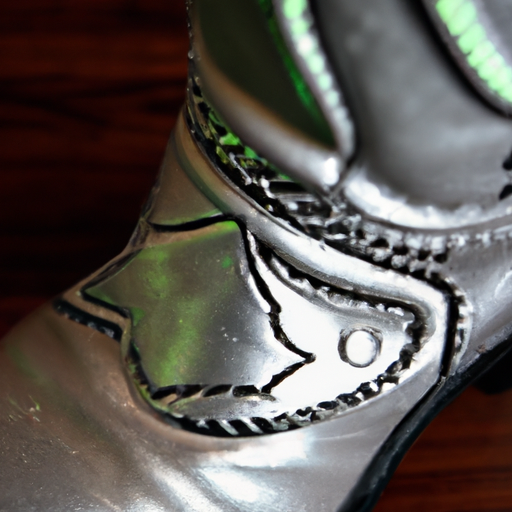Imagine driving down the road in your Silverado, enjoying the smooth ride and relishing the power of your engine. But suddenly, your truck starts to buck and lurch, causing you to grip the steering wheel tightly. This frustrating issue has plagued many Silverado owners, leaving them puzzled and searching for a solution. In this article, we will explore the notorious Silverado bucking problem, uncovering its causes and offering some possible fixes to help you regain that smooth, enjoyable ride you deserve.
Overview of the Silverado Bucking Problem

1.1 What is a Silverado Bucking Problem?
The Silverado bucking problem refers to a common issue experienced by owners of Chevrolet Silverado trucks. It is characterized by sudden and jerky movements, as if the vehicle is “bucking” or lurching forward while driving. This problem can occur at various speeds and can be quite unsettling for the driver and passengers.
1.2 Common Symptoms of a Bucking Problem
There are several symptoms that can indicate a Silverado bucking problem. These include:
- Sudden jerking or lurching movements while driving
- Loss of power or acceleration
- Engine misfires
- Difficulty shifting gears
- Poor fuel efficiency
- Illuminated check engine light
If you are experiencing any of these symptoms while driving your Silverado, it is likely that you are facing a bucking problem.
1.3 Impact on Vehicle Performance and Safety
The Silverado bucking problem can have a significant impact on both the performance and safety of your vehicle. The sudden jerking motions can make it difficult to maintain control of the vehicle, posing a safety risk for you, your passengers, and other drivers on the road. Additionally, the loss of power and acceleration can make it challenging to navigate traffic or merge onto highways, further compromising the safety of your driving experience.
Furthermore, the bucking problem can also lead to decreased fuel efficiency, resulting in higher fuel consumption and increased expenses. Addressing this issue is crucial not only for a smooth driving experience but also for the overall well-being and longevity of your Silverado.
Potential Causes of Silverado Bucking
2.1 Fuel Delivery Issues
One of the potential causes of the Silverado bucking problem is fuel delivery issues. This can occur when the fuel system fails to deliver the appropriate amount of fuel to the engine. A faulty fuel pump, clogged fuel filter, or a problem with the fuel injectors can all contribute to this issue.
2.2 Ignition System Problems
Issues within the ignition system can also lead to the bucking problem in a Silverado. Faulty spark plugs or ignition coils can result in irregular engine combustion, causing the engine to misfire and the vehicle to jerk.
2.3 Transmission Troubles
Problems with the transmission can cause the Silverado to buck. Issues such as worn-out transmission fluid, a malfunctioning torque converter, or a damaged transmission control module can all result in jerky movements and difficulty shifting gears.
2.4 Engine Misfires
Engine misfires can occur due to a variety of reasons, including problems with the fuel system, ignition system, or engine components. When the engine misfires, the Silverado may experience sudden jerks and a loss of power.
2.5 Faulty Sensors
Malfunctioning sensors, such as the mass air flow sensor or oxygen sensor, can provide incorrect data to the engine control module, leading to a bucking problem. These sensors are crucial for ensuring the proper air-to-fuel ratio in the engine, and any discrepancies can result in rough engine performance.

2.6 Dirty or Clogged Air Filters
Air filters play a vital role in keeping the engine clean by preventing dirt, dust, and debris from entering the combustion chamber. When air filters become dirty or clogged, they can restrict airflow, leading to an imbalanced air-fuel mixture and ultimately causing the Silverado to buck.
2.7 Exhaust System Issues
Issues within the exhaust system can also contribute to the bucking problem. A clogged catalytic converter or a damaged muffler can restrict exhaust flow, leading to poor engine performance and jerky movements.
Diagnosing the Silverado Bucking Problem
3.1 Visual Inspection
A visual inspection of your Silverado can help identify any obvious issues that may be causing the bucking problem. Look for loose or damaged wires, disconnected hoses, or any signs of leaks or damage in the various components of your vehicle.
3.2 Diagnostic Trouble Codes (DTCs)
Using an OBD-II scanner, you can retrieve any diagnostic trouble codes (DTCs) stored in your vehicle’s onboard computer. These codes provide valuable information about the specific systems or components that may be causing the bucking problem.

3.3 Fuel Pressure Testing
Performing a fuel pressure test can help determine if the fuel delivery system is functioning properly. By connecting a fuel pressure gauge to the fuel rail, you can measure the pressure of fuel being delivered to the engine. Low fuel pressure can indicate a problem with the fuel pump or fuel filter.
3.4 Spark Plug Examination
Inspecting the spark plugs can give you insight into the condition of your vehicle’s ignition system. Blackened or worn-out spark plugs may need to be replaced, as they can lead to engine misfires and the bucking problem.
3.5 Transmission Fluid Check
Checking the condition and level of your Silverado’s transmission fluid is essential in diagnosing transmission-related issues. Low fluid levels or fluid that appears dark or burnt could be indicators of problems within the transmission that may be causing the bucking problem.
3.6 Sensor Testing
Testing the various sensors in your vehicle, such as the mass air flow sensor and oxygen sensor, can help determine if they are functioning properly. Using a multimeter or a specialized sensor testing tool, you can measure the output of these sensors and compare them to the manufacturer’s specifications.

3.7 Air Filter Inspection
Inspecting the air filters for dirt, debris, or clogs is a simple but important step in diagnosing the bucking problem. If the air filters are dirty or clogged, it is necessary to clean or replace them to ensure proper airflow to the engine.
3.8 Exhaust System Inspection
An inspection of the exhaust system can reveal any issues that may be contributing to the bucking problem. Look for signs of damage or restriction in the catalytic converter, muffler, or exhaust pipes. Any abnormalities should be addressed and repaired accordingly.
Steps to Fix the Silverado Bucking Problem
4.1 Replace or Clean Air Filters
If the air filters in your Silverado are dirty or clogged, they should be either cleaned or replaced. This will ensure proper airflow to the engine, preventing any imbalances in the air-fuel mixture that may be causing the bucking problem.
4.2 Check and Replace Spark Plugs and Ignition Coils
Inspect the spark plugs for signs of wear or damage. If necessary, replace them with new ones that are compatible with your Silverado model. Additionally, check the ignition coils for any faults and replace them if needed, as dysfunctional coils can lead to engine misfires and the bucking problem.

4.3 Inspect and Repair Fuel Delivery System
Perform a thorough inspection of the fuel delivery system, including the fuel pump, fuel filter, and fuel injectors. Replace any faulty components and ensure the system is functioning optimally to deliver the right amount of fuel to the engine.
4.4 Troubleshoot and Repair Transmission Issues
If transmission problems are the root cause of the bucking problem, it is important to diagnose and repair these issues accordingly. This may involve replacing worn-out transmission fluid, repairing or replacing the torque converter, or addressing any problems with the transmission control module.
4.5 Repair or Replace Faulty Sensors
If any sensors in your Silverado are found to be faulty during the diagnostic process, they should be repaired or replaced. This will ensure that accurate data is being sent to the engine control module, preventing engine misfires and the associated bucking problem.
4.6 Clear Diagnostic Trouble Codes (DTCs)
After addressing the underlying issues causing the bucking problem, it is important to clear any diagnostic trouble codes (DTCs) stored in your vehicle’s computer system. This will reset the system and allow you to monitor the vehicle’s performance for any recurring issues.
4.7 Clean or Replace Exhaust Components
Inspect the exhaust system for any damage or restriction that may be causing poor engine performance. Clean or replace any components, such as the catalytic converter or muffler, that are found to be obstructed or faulty.
Preventive Measures for Avoiding Silverado Bucking
5.1 Regular Maintenance and Check-ups
Regular maintenance is crucial for preventing the occurrence of the Silverado bucking problem. Schedule routine check-ups with a trusted mechanic to ensure that all systems and components are in good working order. This will allow any potential issues to be detected and addressed before they turn into major problems.
5.2 Clean Air Filters Regularly
Keeping the air filters clean is an important preventive measure to avoid the bucking problem. Regularly inspect and clean the air filters according to the manufacturer’s recommendations to maintain proper airflow to the engine.
5.3 Use High-Quality Fuel and Additives
Using high-quality fuel and fuel additives can help prevent fuel system issues that can contribute to the bucking problem. Opt for reputable gas stations and fuel brands, and consider adding fuel additives that can help keep the fuel system clean and functioning optimally.
5.4 Timely Spark Plug Replacement
Regularly inspecting and replacing spark plugs at the recommended intervals can help prevent engine misfires and the associated bucking problem. This simple maintenance task can go a long way in ensuring smooth engine performance.
5.5 Transmission Fluid Maintenance
Maintaining proper transmission fluid levels and regularly replacing the fluid according to the manufacturer’s recommendations can help prevent transmission-related issues that can lead to the bucking problem. Make sure to use the recommended type of transmission fluid for your Silverado model.
5.6 Properly Maintain Sensors
To avoid sensor-related problems, it is essential to properly maintain the sensors in your Silverado. Keep them clean and free from dirt or debris, and regularly inspect their wiring connections to ensure they are functioning optimally.
5.7 Monitor Exhaust System Health
Regularly inspecting the exhaust system for any signs of damage or restriction can help prevent the bucking problem. Address any abnormalities promptly to ensure that the exhaust system is functioning properly and facilitating optimal engine performance.
Seeking Professional Help
6.1 When to Consult a Mechanic
While some DIY troubleshooting and repairs may be possible, it is important to know when it is time to consult a professional mechanic. If you are unable to diagnose or fix the bucking problem on your own, or if you lack the necessary tools or expertise, it is best to seek the help of a qualified mechanic who specializes in Silverado trucks.
6.2 Importance of Professional Diagnostics
Professional diagnostics are essential for accurately identifying the underlying issues causing the bucking problem in your Silverado. Mechanics have access to specialized tools and equipment, as well as years of experience, which allow them to diagnose and repair complex automotive problems effectively.
6.3 Choosing a Trustworthy Mechanic
When choosing a mechanic, it is important to look for a reputable and trustworthy professional. Consider recommendations from friends, family, or online reviews. Look for certifications and qualifications that demonstrate their expertise in handling Silverado trucks. Additionally, ensure that they provide transparent pricing and offer warranties on their work.
Conclusion
The Silverado bucking problem can be a frustrating issue to deal with, but with the right knowledge and proactive measures, it can be addressed effectively. By understanding the potential causes, diagnosing the problem accurately, and following the appropriate steps for repair and maintenance, you can keep your Silverado running smoothly and ensure a safe and enjoyable driving experience. Remember, if unsure, it is always best to consult a professional mechanic who can provide expert guidance and assistance.
